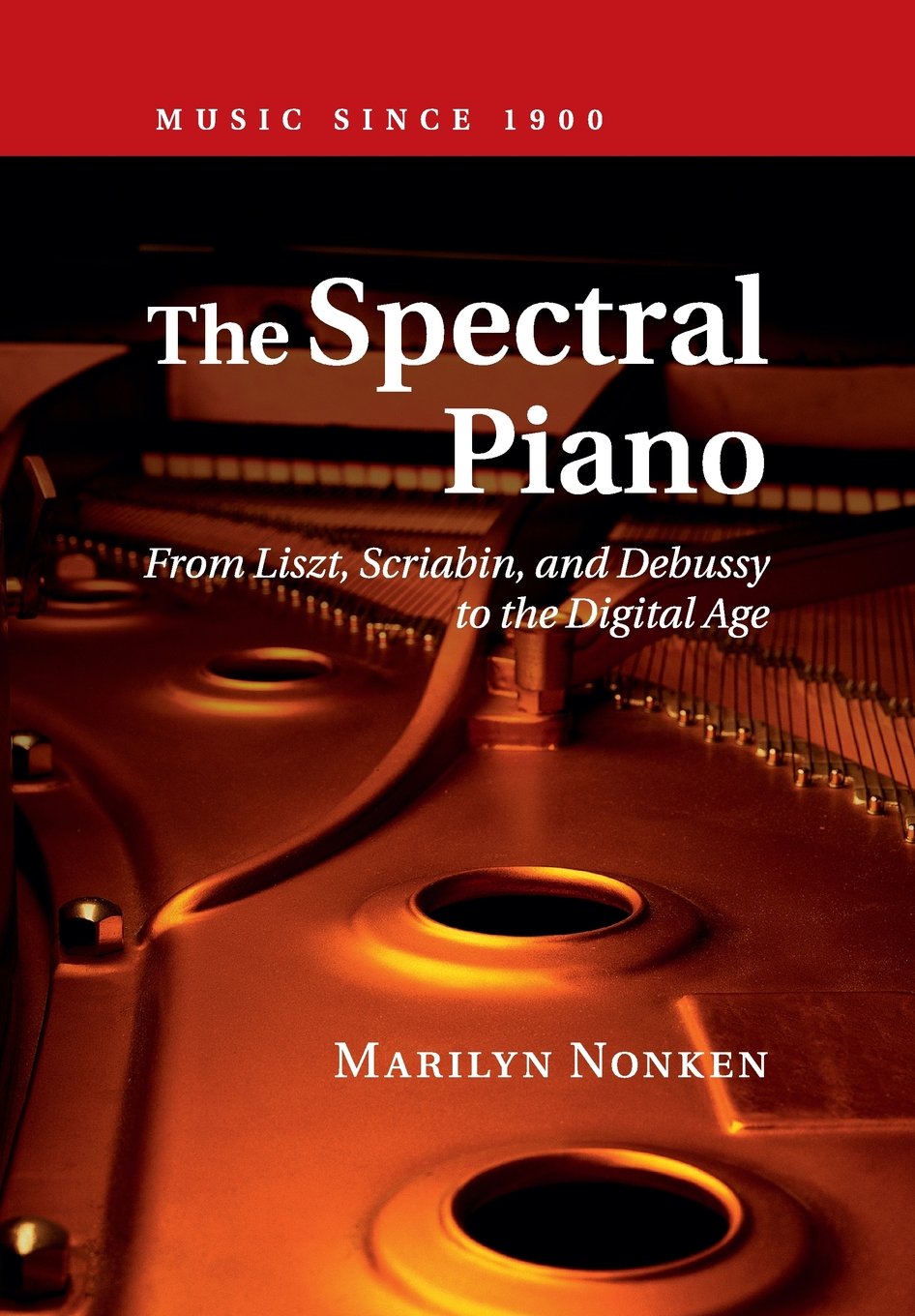
Book review
The Spectral Piano
From Liszt, Scriabin, and Debussy to the Digital Age
By Marilyn Nonken, with a chapter by Hugues Dufourt
Cambridge University Press, 192 pp., 2014/2016 (paperback edition)
By Christian Carey
Recently reissued in paperback, pianist/author Marilyn Nonken’s book The Spectral Piano is a fascinating examination of the history of piano music beginning in the mid-1800s that leads to its use in a spectral context from the 1970s to the present. Nonken’s thesis is that the employment of the piano to imitate the harmonic series so prevalent in contemporary spectralism is a venerable practice; that composers have long sought to subvert the equal-tempered tuning of the piano with various manners of spacing and subterfuge in order to align it more closely with the deployment of overtones found in nature.
Nonken is particularly successful in this pursuit. She connects the music of Liszt, Scriabin, Ravel, Debussy, Messiaen, Boulez, and others to the project of proto-spectralism. The author is also convincing in her positioning of recent American composers, such as Joshua Fineberg (a composer whom she has championed on recording) and Edmund Campion, and British composers James Dillon and Jonathan Harvey, as heirs to the traditions of spectralism. Nonken also excels at making connections between technological advances in measuring acoustic phenomena and parallel advances in proto-spectral and spectral music.
As a matter of course, French spectralism of the 1970s-90s occupies a central role in the book. Discussion of Tristan Murail, Gérard Grisey, and Hugues Dufourt, the latter of whom contributes a chapter, “Spectralism and the Pianistic Expression,” appended at the end of the book, provides a thought-provoking survey of these composers’ spectral works. In turn, the students of this first generation of spectralists, most of whom studied at IRCAM, such as Magnus Lindberg, Kaija Saariaho, Philippe Hurel, and Marc-Andre Dalbavie, are presented as “hybrid spectralists;” heirs to a tradition, but one that they have sought to expand through the addition of non-spectral elements from new complexity, second modernity, electroacoustic, and other areas of compositional activity. A curious omission from this section is Georg Friedrich Haas, whose work flow and friction for sixteenth tuned piano four hands is organized using principles of spectralism.
In The Spectral Piano, Nonken brings to bear both her extensive knowledge of piano literature as an estimable performer of both contemporary and earlier works, as well as an impressive scholarly acumen. The result is a volume that will cause much rethinking of traditional piano music and exposure to a new and vital repertoire. Now that the book has been made available in paperback, it is a must-have for the libraries of composers and pianists.
